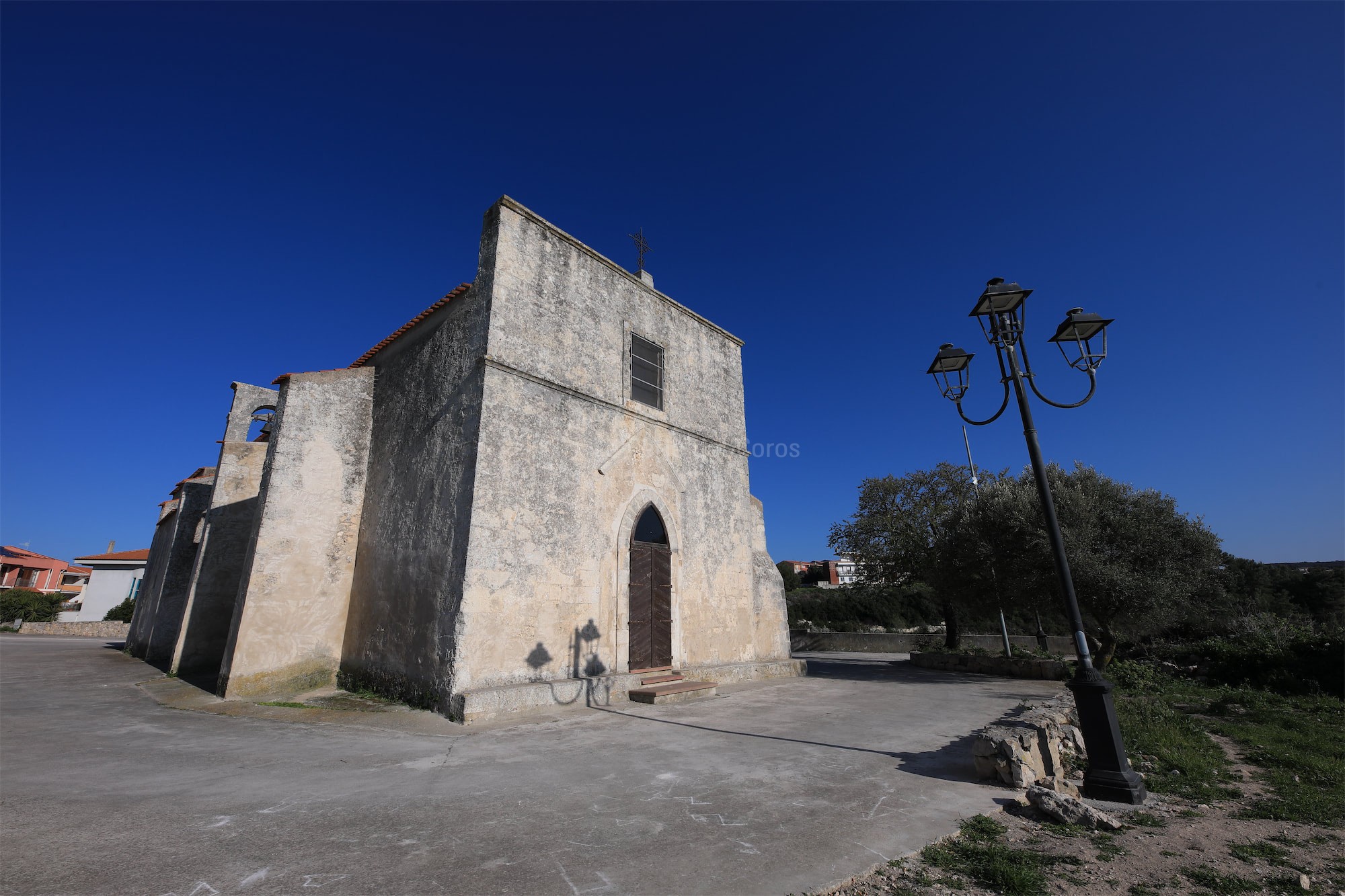
Ossi
Church of Saint Victoria
The Church of Saint Victoria dates back to the 15th century, but underwent several modifications in the following years. It seems that when it was built, it was quite far from the town of Ossi, but very near the Villa of Save and its two ancient churches, Saint Catherine and Saint Peter. The most ancient document that mentions the church is an unpublished paper kept in the Archives of the Crown of Aragon, that documents the battle between the Doria and the Aragonese, fought near the Church of Saint Victoria of Save in 1359. We don’t know precisely when the church was given to the parish of Ossi, but it probably happened around the 17th century. The church was taken care of by the Hermit friars that lived in the shack on the left side of the building, who were among the few who had the right to be buried inside the church. Over the course of time, the church has undergone a lot of renovation work. During the first twenty years of the 17th century, the building was enlarged by following the model of the parish church of Saint Bartholomew, during which the original little apse was sectioned-off, the nave was modified, and a tribune was built in the last nave. Despite this, the building was in bad condition at the beginning of the 19th century, and unsuitable for sacred ceremonies. Hence the second intervention on the church, that seems to have begun in 1813, when the rector Borra asked the curia (tn* an official body that governs a particular church in Roman Catholicism) for authorisation for urgent restoration work, because the building was about to collapse. The rector also asked permission to add two new chapels, to be dedicated to Saint Lucy and Saint John the Baptist. The priest did not have much money, so he suggested taking some building material from the nearby churches of Saint Peter and Saint Catherine of Save, which had been deconsecrated for decades. His requests were granted and the church was immediately restored. The chapels, instead, were built between 1826 and 1827, together with the other altars still present in 1912, which consisted of simple stone tables, painted with a niche on top. An inventory of the gold pieces and precious clothes belonging to the church was made in 1845. These were a result of the donations of the worshipers, who despite their poverty had not hesitated to donate personal objects, even quite expensive ones, as a sign of gratitude to the saint. The church of Saint Victoria reached the beginning of the 20th century poor but well kept; little maintenance work was registered in 1936 and in 1952. Nevertheless, the conditions of the building worsened rapidly, until the 1970s, when the parish priest described it as “without a roof, without doors and with some unstable walls”. In 1977 the Region of Sardinia granted a subsidy for its renovation, during which the roof was rebuilt, the walls consolidated, and the floor repaved; some of the interior was renovated and new furniture was bought. The inside of the church is in good condition at the moment and maintains the charm given it by the place it is located, which has been a crossroad since Roman times. It leads to the most important centres of the area, used throughout the Byzantine and Judgedom periods to nowadays. (tn* Judgedoms or Judicatures: independent states that took power in Sardinia in the Middle Ages, between the 9th and 15th century AD)
Source: “Ossi, history, art and culture” (in Italian), by Marcello Derudas



